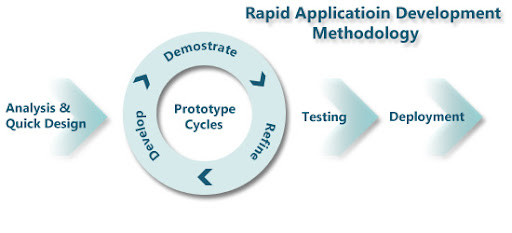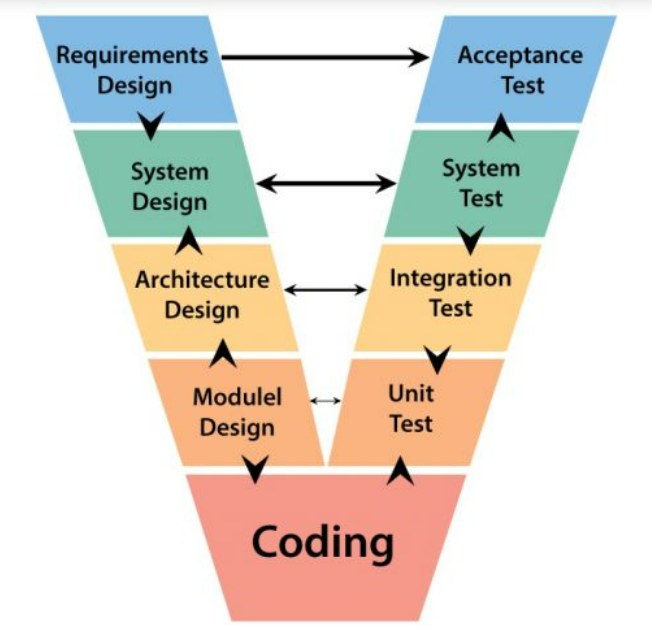Do you want to start working on developing a software project, but do not know where to start? It’s simple – start by planning and choosing a strategy for a smooth and secure development. Refusing such an approach can lead to overspending, delays, and costly errors.
So more and more businesses are relying on SDLC to provide high-quality software as fast, securely, and affordable as possible.
This article covers everything a business needs to know to implement SDLC-based software development. We explain how SDLC methods function, go in-depth into each common step of a product’s life cycle, and showcase the most dependable SDLC approaches on the market.
What is SDLC (Software Development Life Cycle)?
Software Development Life Cycle (SDLC) is a well-structured process used by many companies in the software development industry to build, design, and test software solutions. The SDLC establishes a thorough plan of stages or phases, each with its procedures and goals. The SDLC approach makes it considerably easier to create software that is high in quality, low in cost, and delivered in the shortest amount of time.

6 Stages of the Software Development Process
Whereas each SDLC is individual, all life cycles follow a similar pattern. Let’s observe each typical stage of a typical software development life cycle.
1. Requirement Analysis & Planning
The first and most important phase is understanding the stakeholder’s needs and planning other processes based on them. At this stage, it is important to analyze all objectives, potential hazards, and required resources in extreme detail.
The following are the important deliverables that you should have at the end of the planning phase:
- A document that specifies the project’s functional and non-functional requirements and acts as a roadmap for the development team.
- A strategy that identifies possible project hazards and describes solutions for mitigating or managing such risks.
- A plan that covers the financial and resource needs for the project, including employees, hardware, and software.
2. Design and Prototyping
At this phase, the design team will construct a detailed architectural and software design and a prototype to verify the functioning of the proposed solution.
These are the crucial outcomes that you must have at the end of the Design and Prototyping phase:
- A technical design document that describes the software architecture, database design, data flow, and algorithms in depth.
- A functional design of the software product that shows stakeholders the functionality, design, and user experience of the product.
3. Software Development
This is the process of creating code to implement the design generated during the Design and Prototyping phase into action. This is typically the most time-consuming step of SDLC. Prior to the advanced testing phase, the team should execute basic tests on the product, such as static code analysis and code reviews for numerous device types.
Here are some of the important deliverables you may expect at the end of the software development phase:
- The source code is generated by the developers to construct the software product. Typically, source code is divided into modules, functions, and classes that execute specialized tasks.
- During the development process, developers also construct unit tests to ensure that each piece of code works properly.
4. Software Testing
Software testing is the process of ensuring that the generated software satisfies the requirements and functions as planned. It entails running the program through several test cases to ensure that all criteria are satisfied and that the product runs properly and behaves as intended. Software testing encompasses a diverse array of methods, incorporating both manual and automated techniques, to evaluate software quality thoroughly. This comprehensive process involves employing a variety of methodologies, including accessibility testing, black box testing, functional testing, smoke testing, performance testing, usability testing, and many others. Through meticulous scrutiny of these aspects, software testing ensures the development and delivery of a dependable, high-performing end product that meets user expectations.
The software testing team should provide a comprehensive report that outlines key details. This report should provide a breakdown of results for each test case, including the number of tests that were successful, unsuccessful, or encountered obstacles that prevented them from being executed.
5. Deployment
During this stage, the technology is released into the production environment, where users may access it. This step involves deploying the program to the production server, configuring it, and verifying that the software works as planned. Consequently, the deployment team is responsible for meticulously confirming that the software program has been flawlessly delivered, operating exactly as intended, and entirely free from any issues or failures.
6. Maintenance and Updates
The software is monitored throughout this phase to verify that it is stable and working as planned. This phase may also entail testing to ensure that any new features and upgrades are functioning properly. This involves reacting to user input and resolving any problems or issues detected. Furthermore, this phase entails incorporating any changes and new features consumers request.
The following outcomes can be expected at the end of the SDLC maintenance and upgrades phase:
- Software products may be upgraded in functionality and performance through upgrades and maintenance. These can include bug corrections, feature upgrades, and user experience enhancements.
- Developers may find chances for future development and improvement by evaluating how software products have functioned and grown through time, influencing future SDLC iterations.
Software Development Life Cycle Models
Waterfall Model
The Waterfall Model is a linear sequential model used in the software development life cycle to build a product step by step. This approach divides the project into different phases, each having to be completed before moving on to the next.

Prototyping Development Model
The Prototyping Model is a software development approach that involves building, testing, and reworking a prototype until it is ideal. This model is appropriate when the actual software requirements are unknown or when the user is unsure of what they want.

Agile Software Development Model
The Agile Model generates continuous release cycles, each with minor modifications from the prior version. The product is tested at each iteration. The agile methodology assists teams in identifying and addressing minor difficulties in projects before they become major concerns.

Incremental Development Model
The Incremental Model is an approach in which requirements are separated into many modules of the development cycle. With this Model, each module goes through the requirements, design, implementation, and testing phases. Every succeeding module release adds functionality to the preceding iteration. The procedure is repeated until the entire system is finished.

Iterative Development Model
Each development cycle in the Iterative Model results in an unfinished but deployable version of the program. The initial iteration implements only a fragment of the software requirements, with each successive version adding more. The final iteration includes the whole requirement set.

Spiral Model
The Spiral Model combines iterative development with the systematic, controlled aspects of the waterfall paradigm. When the development proceeds through each phase of the process again, this enables incremental releases and refining through each spiral level.

V Model
Verification and validation steps are done simultaneously in the V-shaped model. Each verification step is linked with a validation phase, and the model is run in a V-shape, with each development phase having an accompanying testing phase. The V-Model is an iterative approach that enables continual system improvement based on user feedback and changing needs.

RAD Model
Rapid Application Development (RAD) refers to an adaptable software development strategy that relies on prototype and immediate feedback. In general, the RAD method promotes development and prototyping above planning. Rapid application development allows developers to change software without having to start from scratch. So in the end, the final product is high-quality and meets the needs of the end users.

Most Preferred Software Development Programming Languages
In addition to a clear model of software development planning, it is also important to choose the programming language that will be suitable for the implementation of your project. Software development is a complex process requiring various programming languages and tools to create functional and reliable applications.
Java, Python, JavaScript, C++, and C# stand out as some of the most favored programming languages within the realm of software development trends. Java is widely utilized in developing online and mobile apps and large-scale corporate systems. Python is a powerful programming language well-known for its simplicity and ease of use. Mostly used for data analysis and scientific computing. JavaScript is a widely used scripting language for developing interactive user interfaces, web applications, and browser games. C++ is a high-performance programming language frequently used to create operating systems, video games, and scientific simulations. In contrast, C# is regularly used to create Windows desktop and mobile apps and games that use the Unity game engine.
Conclusion
In today’s fast-changing technological scene, having a clear and well-defined strategy to software development is more crucial than ever. SDLC is a beneficial software development process that may assist businesses in achieving their goals and delivering high-quality software products. Software development teams may guarantee that their projects are finished effectively, on schedule, and within budget, while addressing the demands of their customers and stakeholders by adopting the SDLC approach.












